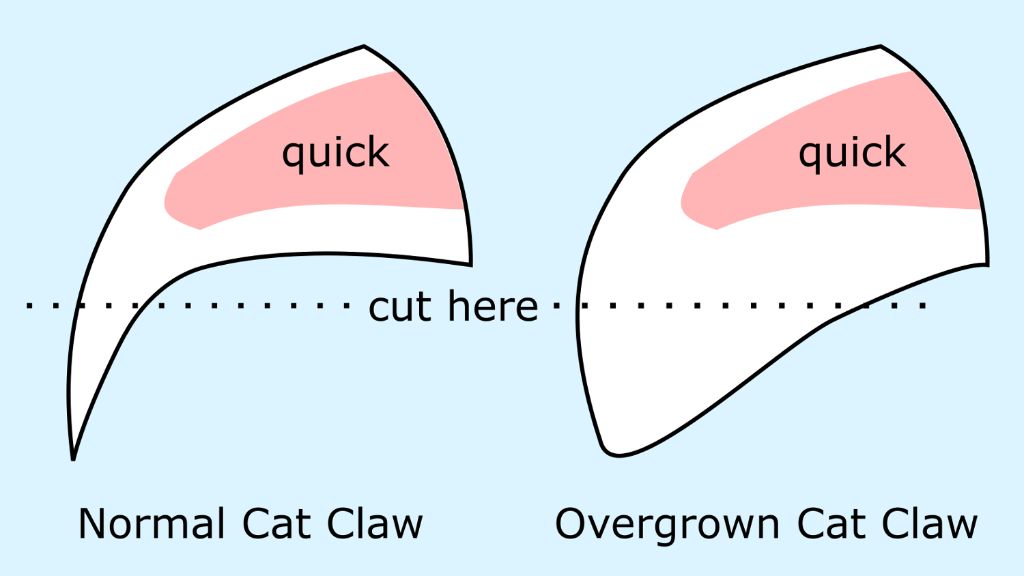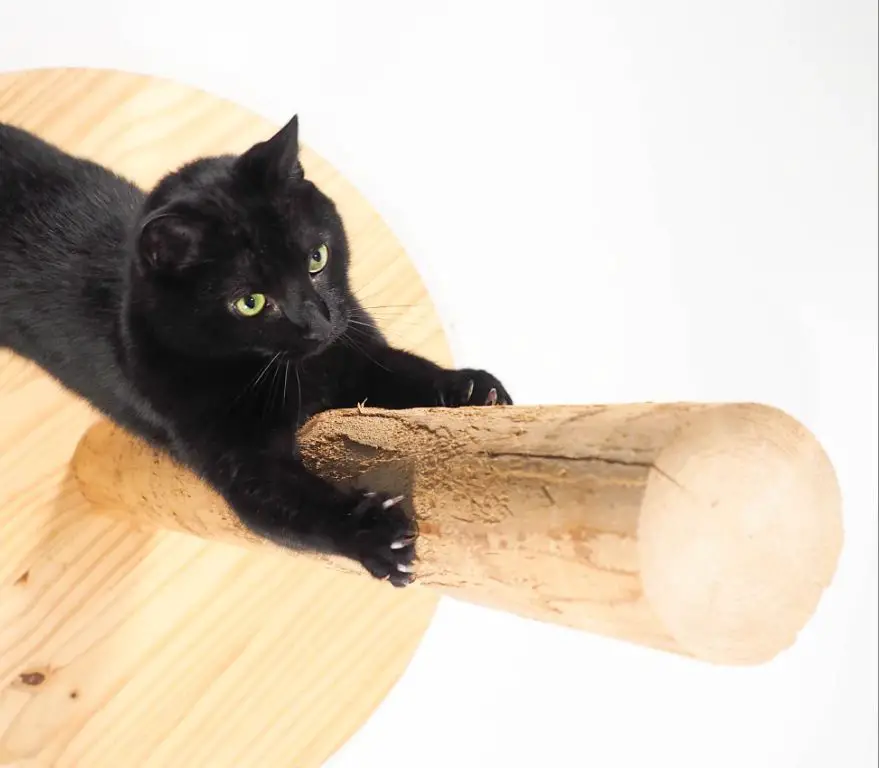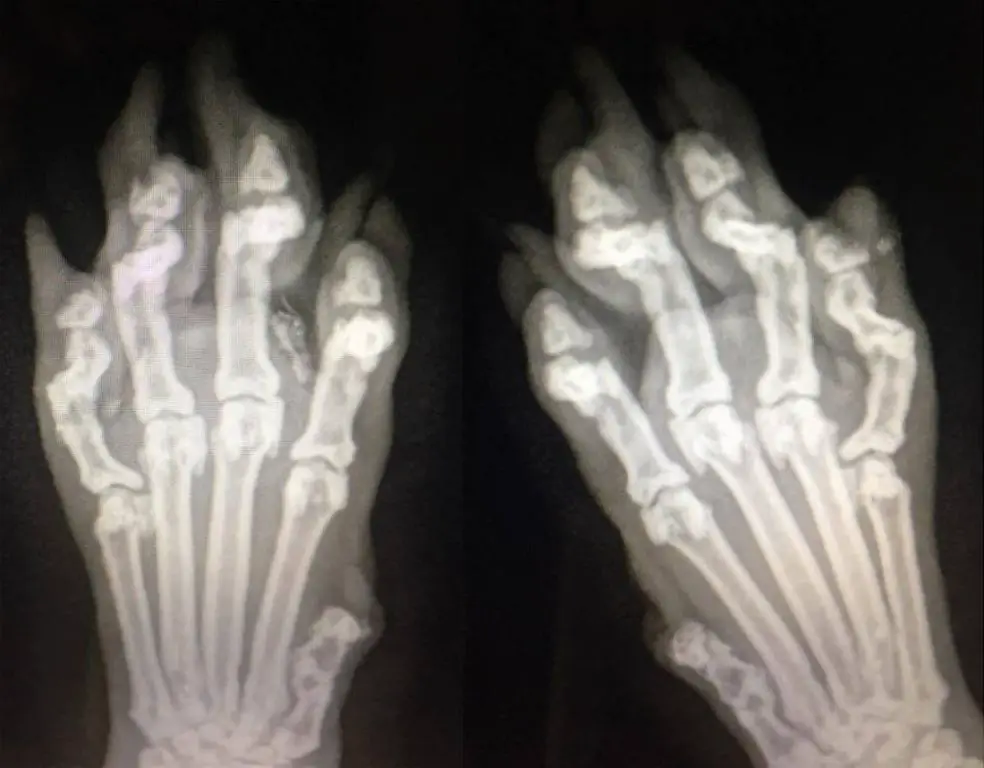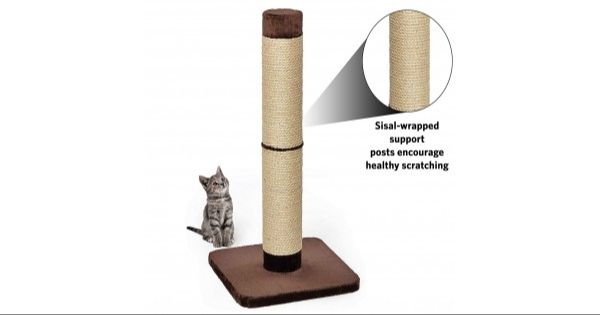Cat nails are known for being extremely sharp. This allows cats to use their nails for important functions like hunting, climbing, scratching, and self-defense. In this article, we will explore the anatomy of cat claws, how they grow and sharpen over a cat’s lifetime, and additional factors that contribute to their incredible sharpness. We’ll also briefly discuss declawing and solutions for cat owners struggling with destructive scratching behaviors. By the end, you’ll have a deeper understanding of how and why cat nails get so incredibly sharp.
Anatomy of Cat Claws
Cat claws are complex structures composed of a hard outer sheath protecting an inner bone core containing blood vessels and nerves (https://cat-world.com/cat-claws/). The visible claw that protrudes from the cat’s toe is the hard outer layer made of keratin, the same material that makes up human fingernails.
Underneath the hard claw is the third phalanx bone, surrounded by soft tissue called the “quick.” The quick contains nerves and blood vessels that supply nutrients to the claw to enable growth. If the quick is cut too short, it will bleed and be very painful for the cat.

At the base of the claw is the cuticle, a fold of hard skin that anchors the claw. The cuticle prevents claws from being pulled backwards. Connective tissue attaches the claw to tendons in the cat’s toes that allow for extension and retraction of the claws (https://lifeandcats.com/all-about-your-cats-claws-everything-you-need-to-know/).
Growth Process
Cat claws continuously grow throughout the cat’s life, shedding outer layers over time similar to how human fingernails grow. The part of the claw called the claw matrix contains cells that divide rapidly and push older claw material forward. As new material gets produced at the base, the older layers of claw get pushed out and shed. This shedding exposes sharp new claw material at the tip. According to one source, “Beaks grow in layers similar to how cat’s claws grow. The outer layers are shed off. Birds of prey have hook shaped upper beaks, which they use to tear the flesh of the animals they prey on. As they lose the old worn layers of the beak, the sharp new layers are exposed.” [1]
Sharpening Through Use
Cats keep their claws sharp through their natural scratching behavior. As cats scratch various surfaces like trees, furniture, and scratching posts, the outer layers of their claws get scratched off, revealing the sharper inner layers beneath. This allows cats to maintain very sharp claw points (Source 1).

When cats scratch, they are tearing off the older, worn outer sheaths on their claws. Underneath each outer sheath is an inner sharper claw encased in a rubbery coating. By scratching, cats peel back this outer layer to expose the sharper claw underneath. As the newly exposed sharp claw gets worn down, the cat will repeat the scratching behavior to sharpen it again (Source 2).
In addition to removing worn outer layers, the act of pulling their claws down and across rough surfaces helps scrape and hone the claws into sharp points (Source 3). So regular scratching serves to both reveal the sharper inner claws and shape the claws into pointed tips.
Additional Sharpening Factors
A cat’s claws are constantly being sharpened through natural behaviors and other factors that wear down and re-expose the sharp edges. Some additional factors that contribute to claw sharpness include:
Climbing – As cats climb trees, furniture, and scratching posts, the contact with rough surfaces chips away at the outer sheath and keeps claws honed. This is one reason regular access to vertical scratching surfaces is important. “Having appropriate scratching posts helps keep your cat’s claws healthy and sharp. Scratching on these surfaces removes frayed and worn outer sections to reveal the sharp inner claw.”
Kneading – Cats naturally knead with their front paws, often while purring and suckling. This motion on fabrics and surfaces works to grind down and sharpen claws over time.
Genetics – Each cat’s claws grow at different rates and have varying thickness in the outer sheath. Some breeds like Bengals and Siamese tend to have harder, denser claws that stay sharper.
Diet – Cats that are well-nourished on a healthy diet rich in proteins and minerals will develop stronger, sharper claws over time.
Declawing
Declawing is a controversial procedure where a cat’s claws are amputated by cutting through the last bone of each toe. This removes the claw and prevents regrowth. Declawing may be recommended to prevent excessive scratching, but it is considered inhumane by many veterinarians and animal rights activists (Renschler, 2003).

The procedure is very painful for cats and can lead to long-term physical and psychological complications. Declawed cats may develop lameness, biting behavior, and stress-related issues due to chronic pain. Many countries have banned declawing as an inhumane practice (DVM360).
Despite the controversy, declawing remains legal in most of North America. However, an increasing number of veterinarians refuse to perform the procedure due to ethical concerns. Animal welfare organizations actively discourage cat owners from having their pets declawed.
Scratching Solutions for Owners
Cats have a natural instinct to scratch objects in their environment. As a cat owner, it’s important to provide solutions to manage this behavior constructively instead of declawing your cat. Here are some tips:
Provide scratching posts around your home. Place them in areas where your cat already likes to scratch and reward your cat with treats when they use the posts. Scratching posts come in many materials but look for ones made of sisal, cardboard, or wood as cats prefer these textures.

Use deterrent sprays on furniture or areas where scratching is unwanted. Sprays containing citrus or menthol scents can deter cats from scratching there. Reapply frequently.
Keep your cat’s nails trimmed regularly to minimize damage. Introduce nail trims early and reward with treats during and after. Only trim the sharp tip, taking care not to cut the quick.
Consider using soft plastic nail caps. These blunt the nails so there is less impact on scratched surfaces. They need to be replaced every 4-6 weeks as the nail grows out.
Provide more vertical scratching surfaces around your home. Scratching posts, cardboard scratchers, cat trees all give cats appropriate places to scratch vertically, which they prefer.
Reward desired scratching. Whenever you see your cat use an acceptable scratching object, reward with praise and treats. This positive reinforcement will encourage them to keep returning to appropriate scratching outlets.
Natural Scratching Behavior
Scratching is an important natural instinct and behavior for cats. They have scent glands in their paws, so when they scratch objects they are marking their territory with their own scent. This is one way cats feel more secure in their environment.
Cats also scratch to remove the dead outer nail sheaths and expose the sharp inner claw underneath. Scratching helps them keep their claws clean, sharp, and healthy. It is a normal “grooming” behavior for cats.
Additionally, scratching stretches and exercises cats’ bodies and paws. Cats have a strong desire to scratch – denying this urge causes stress. As the experts from The Pet Life explain, “Scratching is a feline’s way to mark territory, exercise, and release energy.” [1]
In summary, scratching objects allows cats to mark their territory, sharpen their claws, stretch their muscles, and relieve stress. It is a completely natural behavior that should not be ignored or forbidden.
Concluding Facts
Cats’ claws are kept extremely sharp through their frequent use in climbing, scratching, and hunting. The outer layer of the claw is made up of keratin, the same material as human fingernails, which allows for a sharp point. As the inner layers of the claw grow, the outer layers are shed to continuously reveal a fresh sharp tip. This shedding process allows cat claws to stay sharper than a knife.1
Additionally, cats keep their claws sharp by scratching on various surfaces. Scratching wears down the claw sheaths and exposes the sharp tips. Cats that go outside have additional opportunities to scratch on trees and other surfaces. Indoor cats may need scratching posts and boards to maintain claw sharpness.
While cat claws can seem destructive at times, they are a natural and important part of feline anatomy. Providing appropriate scratching surfaces can allow cats to satisfy their scratching instincts. With an understanding of claw growth and behavior, cat owners can take steps to keep both their cats and furnishings happy.
Conclusion
In summary, cat claws are kept extremely sharp through a combination of their anatomy, growth process, and natural scratching behaviors. Cats have a bony core surrounded by a hard keratin claw sheath with hooked edges that act like little knives. Their claws are constantly growing and shedding layers, exposing fresh sharp underlying points. Scratching on various surfaces further hones their nails. Additional factors like genetics, diet, and declawing surgery can also impact sharpness. While scratching is a normal feline instinct, there are humane solutions to redirect cats’ scratching to appropriate surfaces and protect furniture. The takeaway is that sharp claws are a key part of cat anatomy and serve necessary functions, so maintenance is better than declawing. With some effort to understand cats’ needs, owners can allow natural scratching in a way that preserves sharp claws while also protecting home furnishings.
